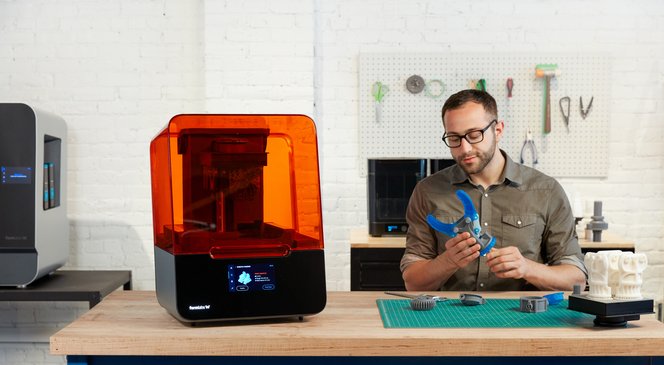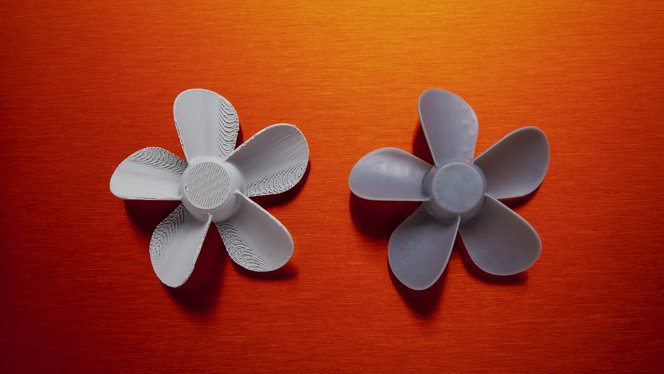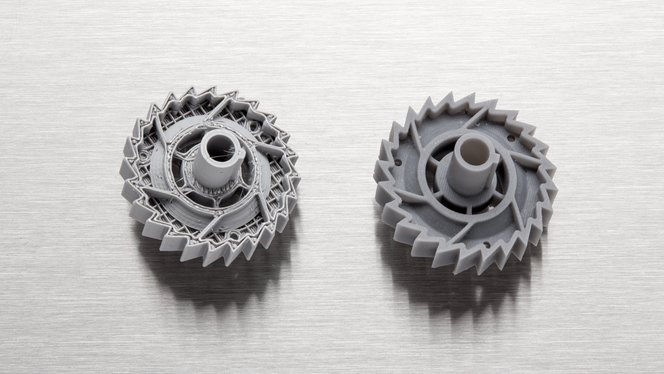FDM και SLA είναι δύο εντελώς διαφορετικές τεχνολογίες και έχουν και οι δύο τους ανάλογα τη χρήση, μεγάλη αξία σε μια σύγχρονη επιχείρηση για χαμηλού κόστους πρωτότυπα και χρηστικά μοντέλα υψηλής ακρίβειας. Για αυτό ακριβώς το λόγο εαν είστε κάτοχος FDM εκτυπωτή (επικοινωνήστε μαζί μας για το ποια μοντέλα είναι στη λίστα των επιλέξιμων) τότε μπορείτε να επεκτείνετε τις δυνατότητες εκτύπωσης μπαίνοντας στον κόσμο του SLA απολαμβάνοντας 400€ έκπτωση στον βραβευμένο επαγγελματικό Formlabs FORM 3 3D printer!

Grow Your Capabilities with €400 off the Form 3
Validate your FDM machine ownership and earn either up to €400 off the Form 3 or Form 3L 3D printer or a free liter of Draft Resin.
How to Receive Your FDM Discount:
step 1
Verify Your FDM Machine
Submit proof of purchase information about your FDM machine. You’ll want to have a photograph of your printer’s model, make, and serial name on-hand. Contact us at info@3dhub.gr
step 2
Find Out What You Qualify For
One of our Sales Specialists will be in touch shortly to help you redeem either a free liter of Draft Resin or up to €400 off the Form 3 or Form 3L.
step 3
Expand Your Fleet by December 24th, 2019
Your FDM discount is only valid until December 24th, so be sure to participate to expand your 3D printing capabilities before it expires.
If you experience difficulty redeeming or receiving your FDM discount or validating your serial name, please contact us for assistance.
FDM and SLA Increase In-House Capabilities
Improved Surface Finish
SLA is a great option for highly detailed prototypes requiring tight tolerances and smooth surfaces, such as molds, patterns, and functional parts. SLA is widely used in a range of industries from engineering and product design to manufacturing, dentistry, jewelry, model making, and education and is known for its fine features, smooth surface finish, ultimate part precision, and accuracy.


Faster Speed Increases Throughput
FDM machines can print with thicker layers and generally use a lower infill which results in fast 3D prints. FDM also has fewer post-processing steps for simple parts. Depending on the project, this means that prints are ready to use soon after they have finished. This is ideal for applications like rapid prototyping, where it allows users to quickly evaluate success and move on to another print or project.
SLA printing materials such as Draft Resin prints up to 40% faster than FDM 3D printers. With a 300-micron layer height, Draft Resin is accurate enough to meet prototyping needs while enabling faster design iterations. Models that take up the entire build volume of an LFS printer can take up to 20 hours to print in standard materials and may require printing overnight. Printing the same part at 300-micron layers with Draft Resin takes less than six hours.
Access to Applications and Increased Material Selection
FDM 3D printers work with a range of standard thermoplastics, such as ABS, PLA, and their various blends. Engineering materials, such as Nylon, PETG, PA, or TPU and high-performance thermoplastics like PEEK or PEI are also available, but often limited to selected professional FDM printers that support them.
SLA resins have the benefit of a wide range of formulation configurations: materials can be soft or hard, heavily filled with materials like glass and ceramic, or imbued with mechanical properties like high heat deflection temperature or impact resistance. Various resin formulations offer a wide range of optical, mechanical, and thermal properties to match those of standard, engineering, and industrial thermoplastics.
Side by Side Comparison
Each 3D printing technology has its own strengths, weaknesses, and requirements, and is suitable for different applications and businesses. The following table summarizes some key characteristics and considerations.
| Fused Deposition Modeling (FDM) | Stereolithography (SLA) | |
|---|---|---|
| Resolution | ★★☆☆☆ | ★★★★★ |
| Accuracy | ★★★★☆ | ★★★★★ |
| Surface Finish | ★★☆☆☆ | ★★★★★ |
| Throughput | ★★★★☆ | ★★★★☆ |
| Complex Designs | ★★★☆☆ | ★★★★☆ |
| Ease of Use | ★★★★★ | ★★★★★ |


